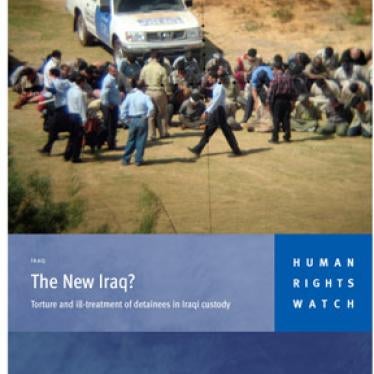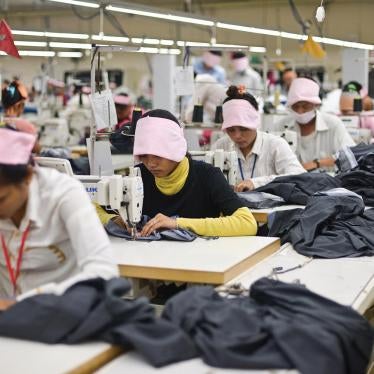(Moscow) – Ukrainian authorities should refrain from excessive force against demonstrators, and protesters should refrain from acts of violence as the civil unrest continues.
“The police seem to have shown restraint yesterday in some cases, but last week’s police brutality is still fresh in everyone’s mind,” said Yulia Gorbunova, Ukraine researcher at Human Rights Watch. “Both sides should exercise restraint – the police should respect the right to peaceful protest and the protesters should reject violence.”
In the early hours of December 11, 2013, the police dismantled several barricades built by protesters that were blocking the streets leading to Independence Square and government buildings. The police also attempted to enter city hall, which opposition activists have occupied for over a week. Protesters tried to prevent the police from dismantling the barricades and entering city hall. Several people on both sides were reported injured in the ensuing clashes.
Witnesses told Human Rights Watch that the police arrived at Independence Square at around 1:30 a.m. and read aloud a court ruling requiring protesters to remove all objects blocking pedestrian walks and roads. More riot police and internal troops arrived and moved in on the protesters. Clashes with police at Independence Square and adjacent streets continued for most of the night, witnesses said.
One witness told Human Rights Watch that he saw police hitting protesters with their hands, including those who were not engaging in acts of violence, and pushing them with shields. An activist who was there told Human Rights Watch that he saw police spraying protesters with teargas. He also said he saw police use their hands to hit protesters who were blocking the police from dismantling barricades. The witnesses said they did not see police use truncheons.
A third witness told Human Rights Watch that he saw riot police grabbing people from the crowd at random and dragging them into police vans parked nearby.
Ten police officers were injured in the clashes, according to published Interior Ministry statements. Thirty protesters were injured, according to media reports. Eight activists were detained and charged with minor hooliganism, media reports said.
The United Nations Principles on the Use of Force and Firearms stipulate that the police are expected to use discretion in crowd control tactics to ensure a proportionate response to any threat of violence, and to avoid exacerbating the situation. The rights to peaceful assembly and expression are protected under human rights treaties by which Ukraine is bound, including the European Convention on Human Rights and International Covenant on Civil and Political Rights.
Marches and rallies, largely peaceful, started in Kiev and other Ukrainian cities on November 21, when tens of thousands of people took to the streets following the government’s unexpected decision to suspend preparations for a European Union-Ukraine Association Agreement. The political and trade deal was considered an important step toward Ukraine’s integration with the EU. On November 30 and December 1, the authorities used excessive force to disperse protesters, injuring dozens.
Following the clashes early on December 11, Prime Minister Mykola Azarov said the police had not used any force against the demonstrators that night and gave assurances that authorities will not use force to disperse peaceful protesters.
“As more and more people join the protest in Kiev, it is essential for police to use restraint and for protesters not to resort to violence,” Gorbunova said. “The authorities have opened an investigation into last week’s excessive use of force by police, and they need to hold those responsible to account.”





